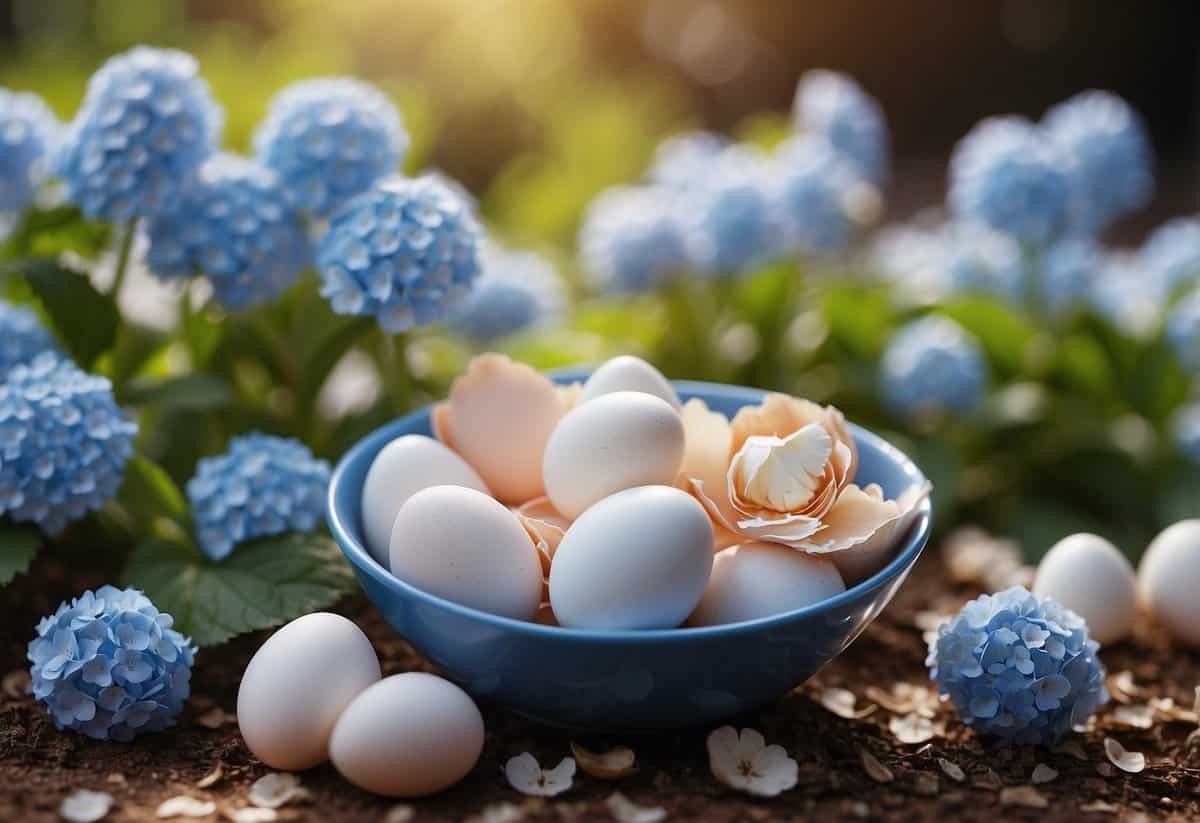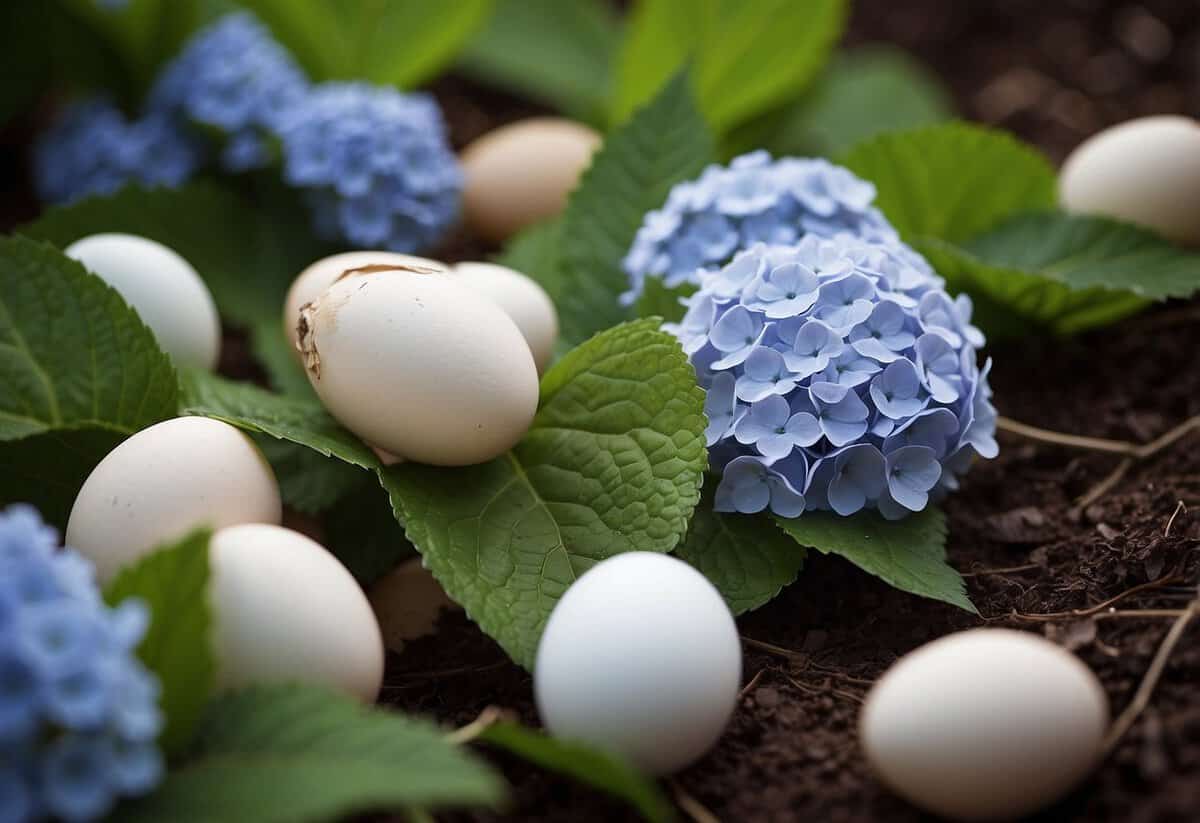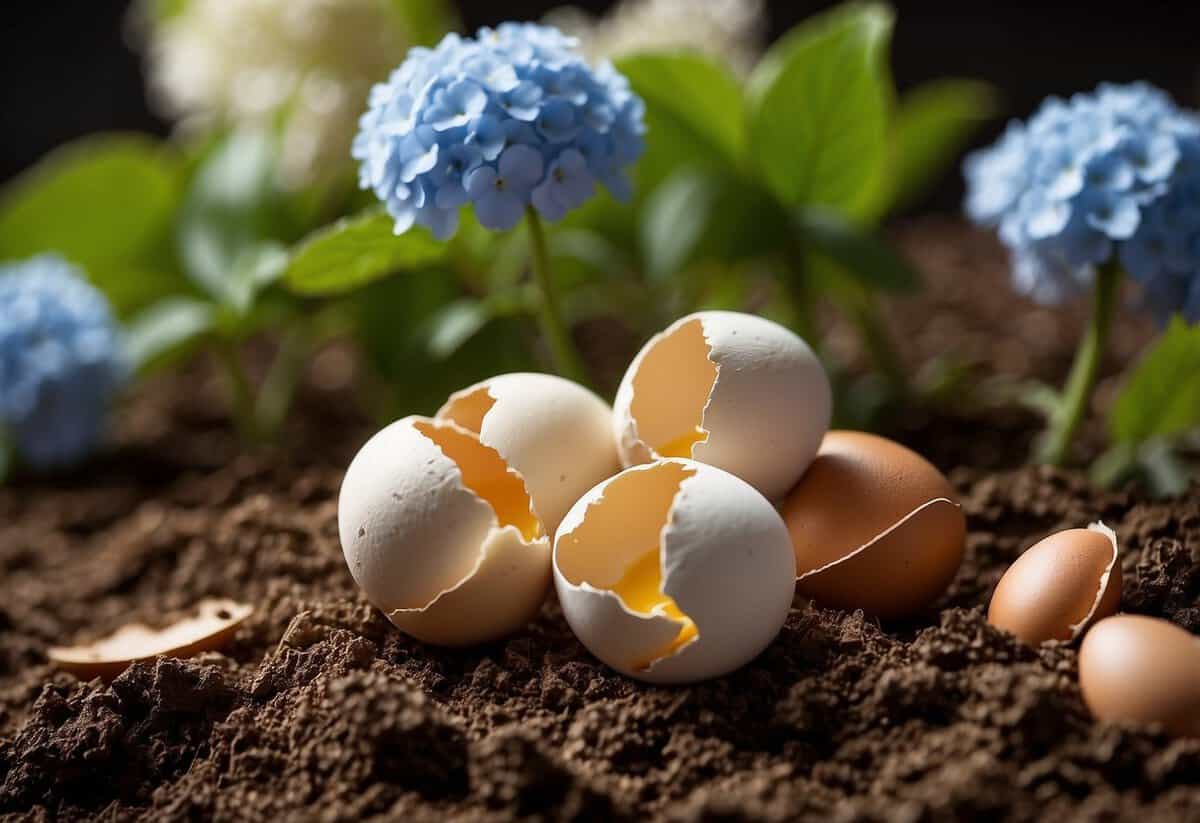What Do Egg Shells Do for Hydrangeas? Simple Gardening Tips!
Eggshells are a common item in our kitchens, but did you know they can work wonders in your garden? If you have hydrangeas, these fragile shells can be a game-changer for your plants. By adding eggshells to your soil, you provide hydrangeas with calcium, which strengthens their structure and promotes healthier growth. This simple, organic method can help you achieve vibrant, flourishing flowers.

As eggshells decompose, they gradually reduce the soil’s acidity, benefiting your hydrangeas even further. Less acidic soil helps hydrangeas absorb nutrients more effectively and can even influence their color. For instance, adding eggshells can lead to beautiful purple blooms, adding a unique touch to your garden.
Incorporating eggshells is easy and environmentally friendly. You just need to crush them and sprinkle them around the base of your plants. Over time, they break down naturally, enhancing your garden’s soil and helping your hydrangeas thrive.
The Role of Eggshells in Gardening

Eggshells provide a natural way to boost calcium levels in soil and modify pH for certain plants like hydrangeas. They also serve as an excellent addition to compost bins, enriching the compost with vital minerals.
Boosting Soil Calcium Levels
Eggshells are rich in calcium carbonate, making them a valuable addition to your garden soil. When crushed into a fine powder and sprinkled around plants, eggshells release calcium slowly as they break down. This slow-release nature benefits plants like tomatoes, cucumbers, and zucchini, which need calcium to prevent issues like blossom-end rot.
To use eggshells effectively, rinse and dry them thoroughly, then crush them into small pieces. You can mix this powder directly into the soil or combine it with other organic fertilizers. This practice not only supplies calcium but also helps balance other nutrients in the soil.
Modifying Soil pH for Hydrangeas
Hydrangeas are unique because their flower color can change based on the soil pH. Adding eggshells to your soil can help modify soil pH. Eggshells, being high in calcium carbonate, can raise the pH of acidic soils, making them more alkaline. This adjustment can change the color of hydrangea flowers from blue to pink.
To achieve this, you can add a layer of crushed eggshells around the base of your hydrangeas. Mix the shells into the topsoil, which will help the calcium carbonate interact with the soil over time. Remember, this process doesn’t produce immediate results, so patience is key.
Composting with Eggshells
Eggshells are great for compost bins. They compost well with other organic materials, enriching the mixture with calcium and other essential minerals. Adding eggshells to your compost can help balance the nitrogen-phosphorus-potassium ratio, which is crucial for healthy plant growth.
For best results, clean and crush the eggshells before adding them to your compost. This will speed up the decomposition process. Eggshells not only enhance the nutrient content of your compost but also help improve its structure and aeration, making it an effective mulch and natural fertilizer for your garden.
Improving Hydrangea Health and Growth

Eggshells can provide significant benefits for hydrangeas, from enhancing flower color to promoting stronger plant development. By understanding how to use these simple household items, you can help your hydrangeas thrive.
Enhancing Flower Color and Bloom Quality
Using eggshells for hydrangeas can impact the colors of their blooms. Calcium, found in eggshells, helps improve the overall health of the plant, making blooms more vibrant and plentiful. For instance, eggshells can help improve the absorption of other nutrients, which supports better bloom quality.
Hydrangea blooms can change colors based on the soil’s pH level. While eggshells don’t directly alter pH, the calcium content strengthens the plant. For blue flowers, consider also using aluminum sulfate. For pink flowers, adding lime can be beneficial. When eggshells decompose, they release calcium slowly, which contributes to the long-term health of your hydrangeas and boosts bloom quality.
Combining eggshells with other organic materials like coffee grounds can offer a balanced nutrient profile. This mix helps in creating an ideal environment for your plant to produce colorful and healthy flowers.
Promoting Stronger Plant Development
Eggshells are rich in calcium, an essential nutrient for hydrangeas. The calcium content supports the development of strong cell walls. This results in more robust plant structures, making it easier for the plant to withstand various environmental stresses.
You can help decompose the eggshells faster by crushing them into small pieces. This helps the calcium and other minerals be more readily available to the plant, thereby enhancing overall plant growth.
Additionally, calcium improves the absorption of other nutrients such as magnesium and potassium, which are vital for healthy growth. Ensuring your hydrangeas get enough sunlight and proper fertilization can also complement the benefits provided by eggshells.
Using eggshells in your garden is simple. Just sprinkle crushed eggshells around the base of your hydrangeas. As they break down, they will naturally enrich the soil, giving your plants a steady supply of nutrients. This method ensures that your hydrangeas grow strong and healthy over time.
Direct Applications of Eggshells to Soil

Using eggshells in your garden helps improve soil quality by adding calcium carbonate, which can benefit plants like hydrangeas. This guide helps you learn how to create and use eggshell powder effectively.
Creating Eggshell Powder
First, you need to prepare the eggshells by thoroughly rinsing them to remove any egg residue. Let them dry completely, either by air drying or placing them in the oven at a low temperature for a few minutes.
Once dry, crush the shells into smaller pieces using your hands or a mortar and pestle. For a finer texture, you can use a blender or coffee grinder to turn the pieces into a fine powder. This fine powder is easier for plants to absorb and provides a slow-release fertilizer effect.
Make sure to store the powdered eggshells in an airtight container until you are ready to use them. This keeps the powder dry and prevents it from clumping together.
Applying Powdered Eggshells to Gardens
To apply the eggshell powder to your garden, start by lightly sprinkling the powder over the soil surface around your hydrangeas or other plants. You can use about 1 tablespoon of powder per square foot of soil.
After spreading, gently mix the powder into the top layer of soil using a garden trowel or your hands. This helps the calcium carbonate reach the plant roots more effectively.
You can also create an eggshell solution by soaking the powdered shells in water overnight and then pouring the liquid onto the soil. This method allows for quicker absorption and can be applied more frequently, such as once a month during spring and summer.
Regular application of eggshell powder can improve soil quality, promote healthy growth, and help your hydrangeas bloom beautifully.
Environmental and Safety Considerations

Using eggshells for hydrangeas brings various advantages, especially for organic gardening and pest control measures. It’s crucial to consider their impact on gardening practices and potential safety issues.
Organic Gardening Practices
Eggshells are a great addition to organic gardening. They provide calcium, which is essential for hydrangeas. When you crush eggshells, they release calcium slowly into the soil, much like garden lime. This helps strengthen plant cell walls and can improve overall plant health.
Since eggshells are organic, they don’t introduce harmful chemicals into your garden. Unlike commercial fertilizers, they break down naturally. This supports a healthy soil ecosystem, promoting the growth of beneficial microbes. You can also mix eggshells with other organic materials like compost or Epsom salt, enhancing nutrient availability for your hydrangeas.
One thing to watch out for is bacteria like salmonella. Ensure eggshells are clean and dried before using them. This simple step can help prevent the spread of harmful bacteria to your plants.
Preventing Pests Naturally
Eggshells can also act as a natural pest deterrent. Crushed eggshells scattered around your hydrangeas create a rough barrier that slugs and snails avoid. This is a simple and effective way to keep these pests from damaging your plants.
Additionally, eggshells can deter larger pests. The sharp edges of the shell fragments can be uncomfortable for soft-bodied insects to crawl over, making your garden less attractive to them. By using eggshells, you can reduce the need for chemical pesticides, which aligns with organic gardening principles.
Besides deterring pests, eggshells contribute to improving soil drainage. Better drainage means healthier plants, as it prevents root rot and other moisture-related issues. You might mix eggshells with other organic materials to create a more well-rounded soil amendment, ensuring your hydrangeas thrive.







